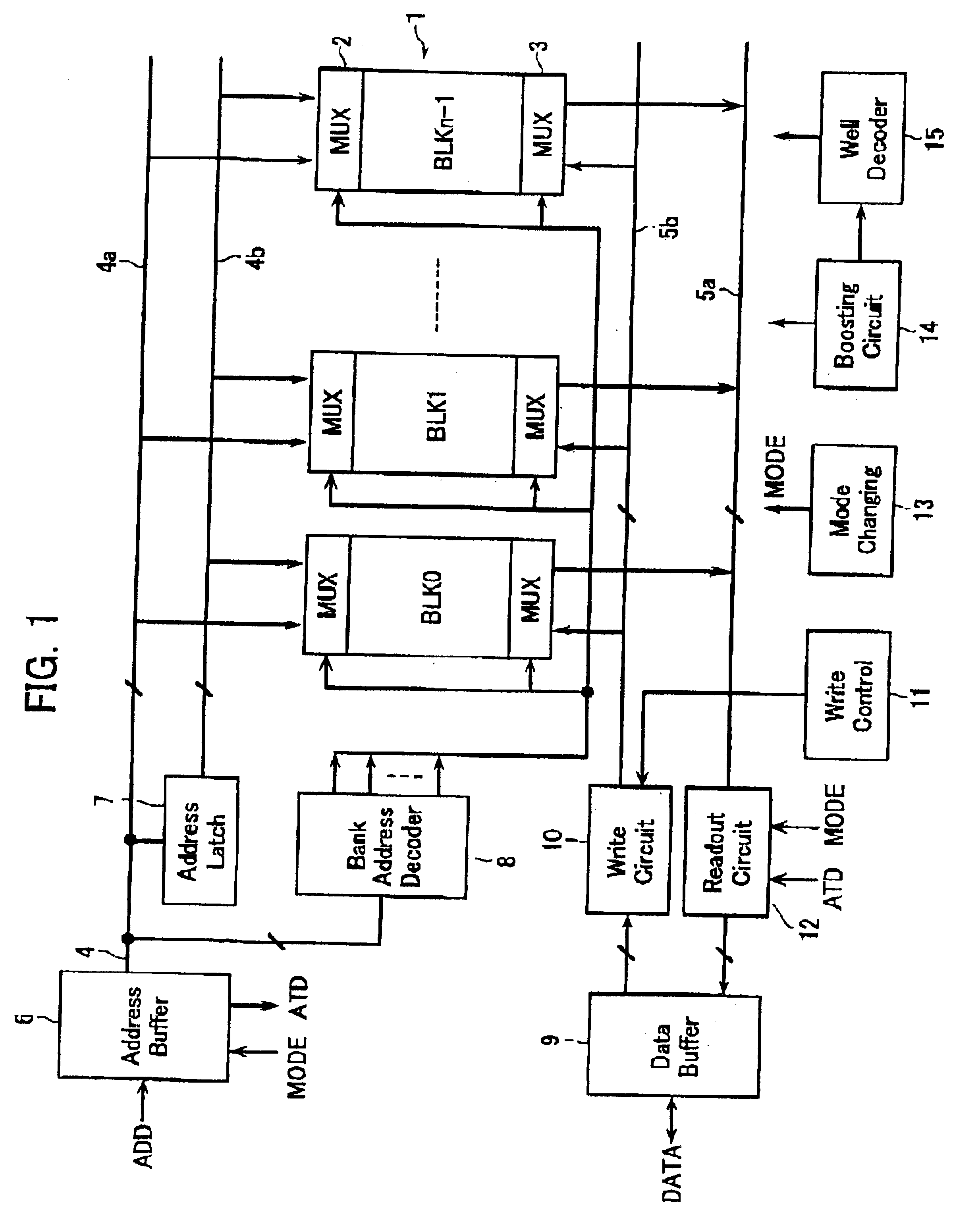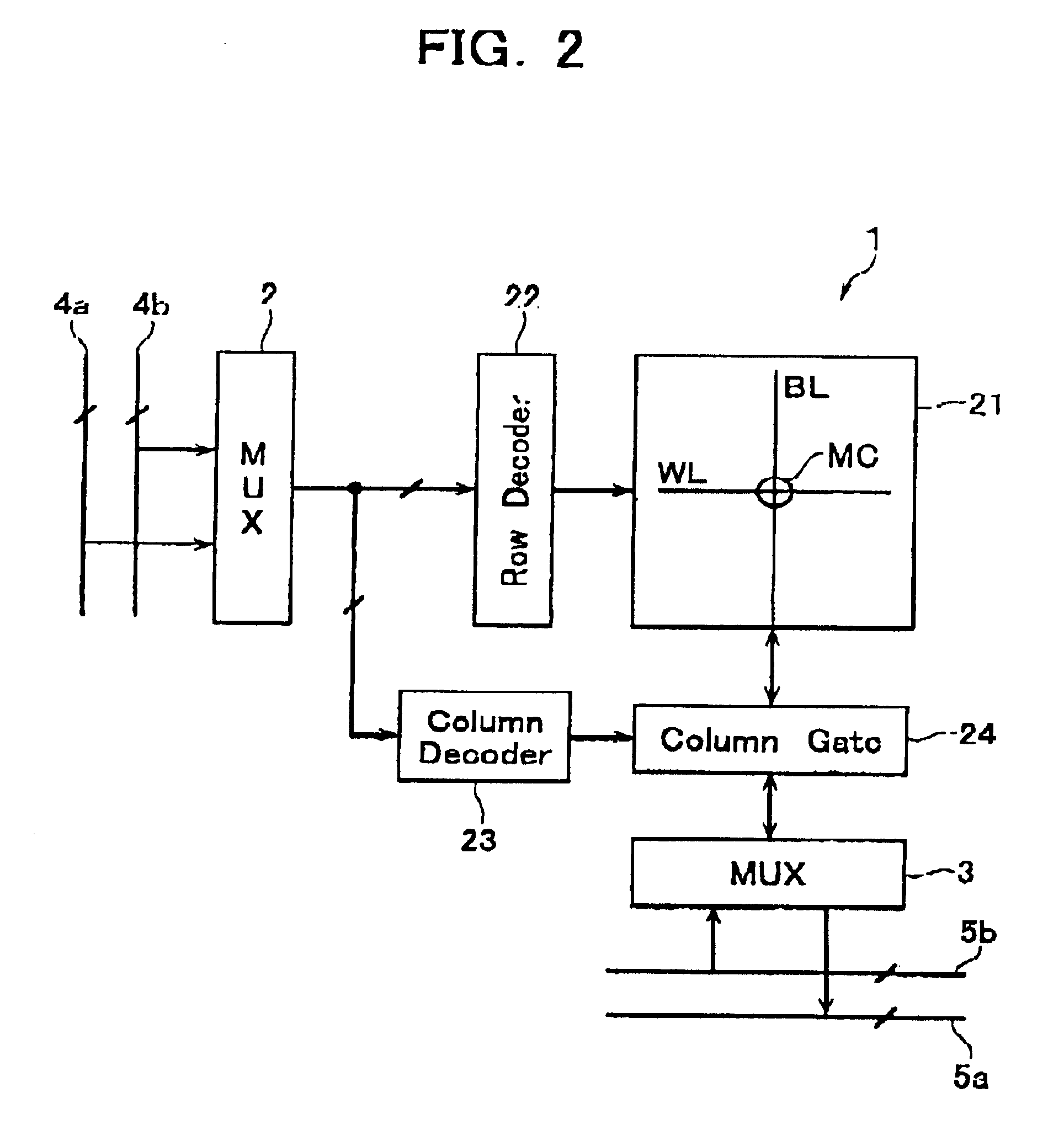Nonvolatile semiconductor memory device with first and second read modes
a nonvolatile, semiconductor technology, applied in the direction of static storage, digital storage, instruments, etc., can solve the problems of significant waste of electrical power, large number of sense amps operating in vain,
- Summary
- Abstract
- Description
- Claims
- Application Information
AI Technical Summary
Benefits of technology
Problems solved by technology
Method used
Image
Examples
Embodiment Construction
Embodiments of this invention will be explained with reference to the accompanying drawings below.
FIG. 1 illustrates, in schematic circuit block form, a configuration of a flash EEPROM chip in accordance with one embodiment of the invention. Shown herein is a flash memory capable of simultaneous execution of both a data rewrite operation in a given bank and a data read operation in another bank.
A memory cell array 1 is arranged by disposing nonvolatile memory cells in a way as will be described later. The cell array 1 is constituted from n cell blocks BLK (BLK0, BLK1, . . . , BLKn-1), which are subdivided into two or more banks each having an appropriate number of cell blocks. In order to enable simultaneous execution of data rewriting and data reading in different banks, address signal lines 4 are divided into a bundle of read-use address signal lines 4a and a bundle of write-use address signal lines 4b. Similarly, data lines 5 also are divided into a bundle of read-use data lines ...
PUM
 Login to View More
Login to View More Abstract
Description
Claims
Application Information
 Login to View More
Login to View More - R&D
- Intellectual Property
- Life Sciences
- Materials
- Tech Scout
- Unparalleled Data Quality
- Higher Quality Content
- 60% Fewer Hallucinations
Browse by: Latest US Patents, China's latest patents, Technical Efficacy Thesaurus, Application Domain, Technology Topic, Popular Technical Reports.
© 2025 PatSnap. All rights reserved.Legal|Privacy policy|Modern Slavery Act Transparency Statement|Sitemap|About US| Contact US: help@patsnap.com



